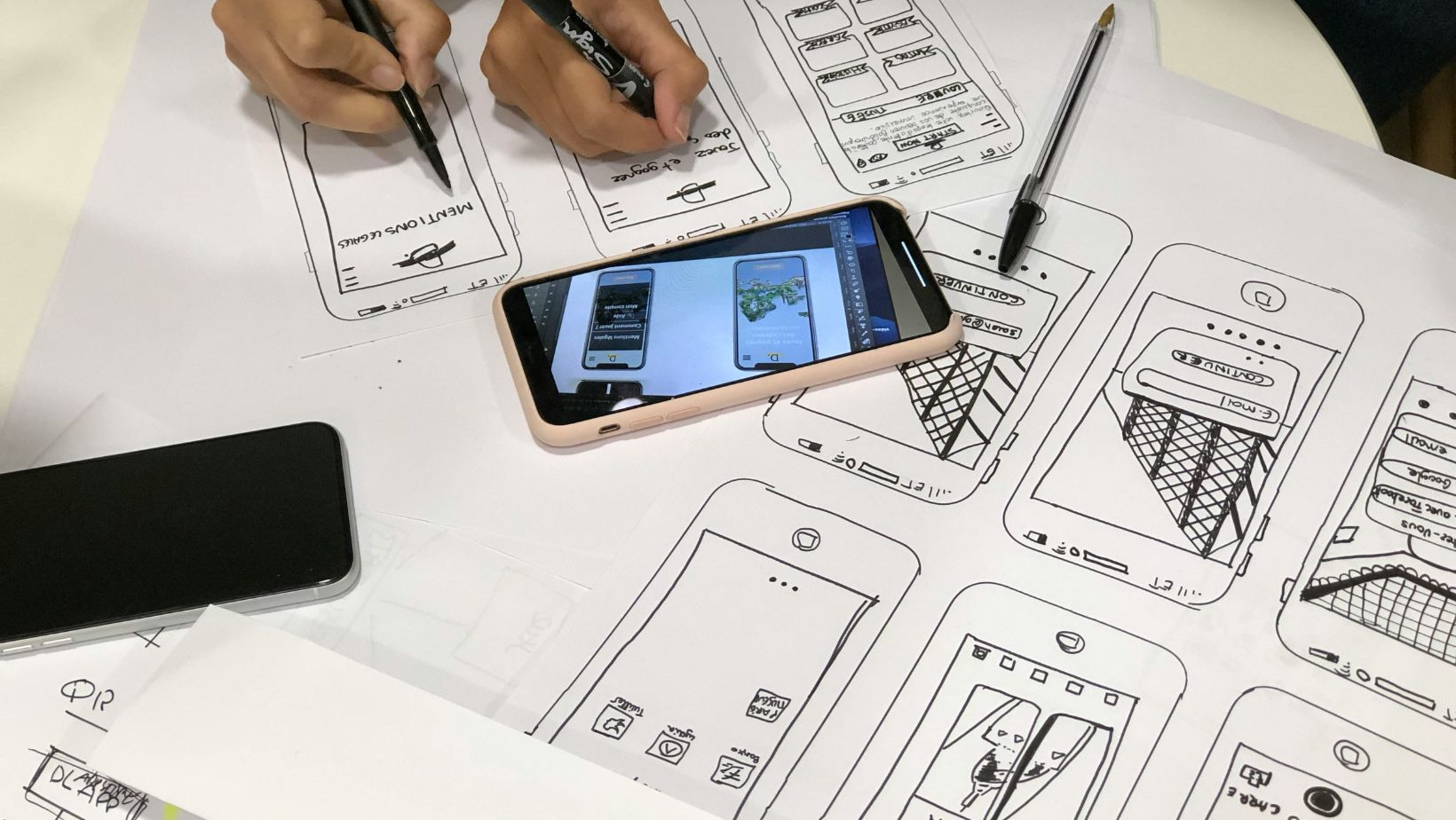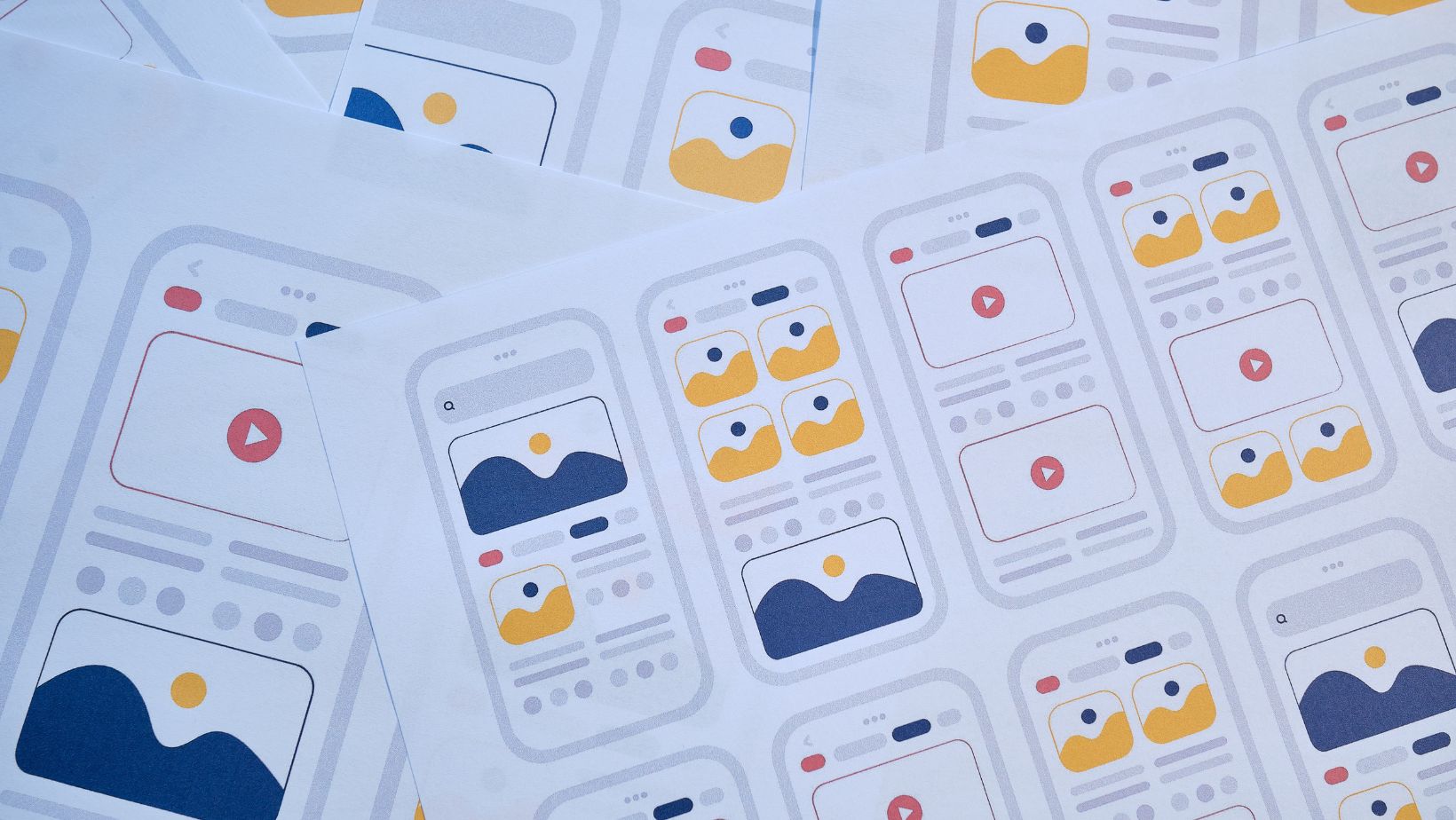
In today’s hyper-connected world, mobile apps have become an integral part of our daily lives. From ordering food to managing finances, we rely on apps for a wide range of tasks. Consequently, the success of any mobile app hinges heavily on its user interface (UI) and user experience (UX). A well-designed UI/UX not only enhances user satisfaction but also drives engagement and boosts app adoption rates. Furthermore, creating a unique and memorable brand identity often requires a custom UI that reflects the app’s distinct personality and target audience.
Table of Contents
ToggleTo create a truly user-centric mobile app, consider these key principles:
- User-Centric Approach: Understand your target audience deeply. Conduct thorough user research and gather feedback to create an app that resonates with their needs, preferences, and pain points. For example, a travel booking app could prioritize features like offline maps and currency converters for users traveling internationally, while a food delivery app could focus on personalized recommendations and easy-to-use filters for users with dietary restrictions.
- Simplicity and Clarity: Prioritize simplicity and clarity in your design. Use intuitive navigation, clear labels, and concise instructions to guide users effortlessly. For example, a banking app could simplify complex financial transactions by providing clear visual cues and step-by-step instructions, making it easier for users to manage their finances.
- Consistency: Maintain consistency throughout the app. Use the same color schemes, fonts, and design elements across different screens. This not only enhances visual appeal but also helps users quickly learn how to interact with the app. For example, a social media app should maintain consistent icons and navigation menus across all screens, allowing users to easily navigate and interact with the platform.
- Accessibility: Ensure your app is accessible to users with disabilities. Incorporate features like screen reader compatibility, adjustable text sizes, and high-contrast modes. For example, an e-commerce app can improve accessibility by offering options for users to adjust font sizes, use screen readers, and navigate the app using keyboard shortcuts.
- Responsiveness: Design responsive interfaces that adapt seamlessly to different screen sizes and orientations. This ensures a consistent and enjoyable experience across all devices. For example, a news app should display content clearly and concisely on both smartphones and tablets, regardless of screen size or orientation.
- Personalization: Tailor the user experience to individual preferences whenever possible. This can be achieved through personalized recommendations, customized settings, and user profiles. For example, a music streaming app could personalize recommendations based on user listening history and preferences, while a social media app could curate content based on user interests and interactions.
- Visual Appeal: Use high-quality graphics, attractive animations, and a visually balanced layout to create an aesthetically pleasing and memorable experience. For example, a gaming app can leverage stunning visuals and engaging animations to create an immersive and enjoyable gaming experience.
The Importance of Mobile App Onboarding:
The onboarding process is a critical stage in the user journey. It’s the first impression your app makes on new users, and it can significantly impact their overall experience. A well-designed onboarding process should be:
- Concise and engaging: Avoid overwhelming users with information. Use interactive tutorials, short videos, or animated walkthroughs to guide them through the essential features. For example, a travel booking app could use an interactive map to guide new users through the process of searching for flights and booking hotels.
- Personalized: Tailor the onboarding experience to individual user needs and preferences. For example, if a mobile casino app in India offers no deposit bonuses, the onboarding process could highlight this incentive and guide new players on how to claim it.
- Value-driven: Highlight the key benefits of using the app and how it can solve user problems. For example, a productivity app could showcase how its features can help users stay organized, manage their time effectively, and reduce stress.
The Role of UI/UX in Driving App Success:
A well-designed UI/UX is not just about aesthetics; it’s a critical factor in driving app success. A positive user experience leads to:
- Increased user engagement: Users are more likely to spend more time within the app and return frequently.
- Higher app store ratings and reviews: Satisfied users are more likely to leave positive reviews, which can significantly impact app visibility and downloads. For example, a highly-rated food delivery app with a user-friendly interface is more likely to attract new customers and encourage existing customers to continue using the app.
- Improved brand loyalty: A positive user experience fosters brand loyalty and encourages users to become repeat customers. For example, a social media app with a strong emphasis on user privacy and data security is more likely to build trust and loyalty among its user base.
Conclusion:
Designing effective user interfaces for mobile apps requires a deep understanding of user needs, a focus on simplicity and clarity, and a commitment to continuous improvement. By adhering to the principles of user-centered design and focusing on creating a seamless and enjoyable user experience, developers can build successful mobile apps that stand out in a crowded marketplace.



